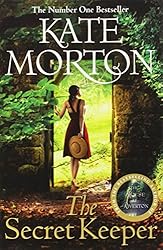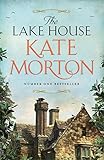
This year I’ve been attempting to do The Official TBR Pile Challenge 2015, hosted by Adam from Roof Beam Reader. The Challenge was to read 12 books from my ‘to be read’pile. Two alternates were allowed, just in case you just couldn’t finish a book for whatever reason.
The books you read must have been on your bookshelf or ‘To Be Read’list for AT LEAST one full year and you have to list them in advance.
For the final wrap up post Adam asks:
If you didn’t finish; what kind of progress did you make? 1 of 12? 6 of 12? Even reading one book is a step in the right direction, so if you gave it a shot ‘“ good for you!
Which books from your list did you love? Which ones did you hate? Plan to read any of the leftovers in 2016?
I was a bit doubtful that I’d complete this challenge because I often find that planning in advance what I’m going to read doesn’t work for me ‘“ I seem to find reasons for reading other books instead of the ones on my list!
These were the 14 books I listed:
I didn’t read all the books, but I didn’t do too badly, finishing 8 books out of 14.
Books I finished:
- The Robber Bride by Margaret Atwood (pub 1994 ‘“ on my TBR since 2009) Finished 2 September 2015. At times I thought it was too detailed and I just wanted to get on with the story. But overall I thought it was very good, and in parts excellent.
- The Burning by Jane Casey (pub 2010 ‘“ on my TBR since 2013) Finished 9 February 2015. I really enjoyed this, the first the DC Maeve Kerrigan series.
- Zen there was Murder by H R F Keating (pub 1960 ‘“ on my TBR since 2012) Finished 22 July 2015.It’s a mixture of Zen Buddhism and murder and For most of the time I was completely bamboozled!
- Mrs Jordan’s Profession by Claire Tomalin (pub 1995 ‘“ on my TBR since 2011) Finished 12 November 2015. I loved this book about the actress Dora Jordan and her relationship with the Duke of Clarence, later King William IV .
- Fresh from the Country by Miss Read (pub 1960 ‘“ on my TBR since 2012) Finished 21 August 2015. Set in the early 1950s , this is a novel about Anna Lacey, a newly qualified teacher. A bit disappointing compared to Miss Read’s Fairacre and Thrush Green novels.
- The Interpretation of Murder by Jed Rubenfeld (pub 2006 ‘“ on my TBR since 2007) Finished 9 April 2015. This began well but I lost interest and at times I felt it was slowed down too much by psychological exposition and debate.
- The Secret Keeper by Kate Morton (pub 2010 ‘“ on my TBR since 2013) Finished 21 June 2015. A book that really captured my imagination. I loved everything about it.
- Diamonds are Forever by Ian Fleming (pub 1956 ‘“ on my TBR since 2011) – Finished 18 December 2015. An entertaining if not a mind-stretching book. I enjoyed it.
Books I didn’t read/finish:
- The House of the Spirits by Isabel Allende (pub 1994 ‘“ on my TBR since 2008)
- The Needle in the Blood by Sarah Bower (pub 2007 ‘“ on my TBR since 2007) I began reading this but abandoned it as I found it so confusing and I don’t like the fact that it’s written in the third person present tense, which I find awkward.
- Martin Chuzzlewit by Charles Dickens (pub 1844 ‘“ on my TBR since 2007)
- Bad Land by Jonathan Raban (pub 1985 ‘“ on my TBR since 2011)
- We Were the Mulvaneys by Joyce Carol Oates (pub 1997 ‘“ on my TBR since 2011) – I’ve started reading this one.
- Nineteen Eighty Four by George Orwell (pub 1949 ‘“ on my TBR since 2011)
Apart from The Needle in the Blood I hope to read these books next year.
This was my first attempt at this challenge and will be the last as Adam at RoofBeamReader will not be hosting this next year!







 Kate Morton’s next book,
Kate Morton’s next book,